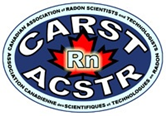CARST/ACSTR & Lung Association-Ontario Urges Wynne Government To Protect Residential
Tenants/Homeowners Lungs
Protect residential homeowners and tenants from the dangers of radon
Toronto- Now that the Ontario government is making housing more affordable, let’s make sure it’s safe. There is an invisible, radioactive gas which, according to Public Health Ontario, is linked to almost 850 deaths in Ontario per year. It’s not expensive to test, not expensive to fix, but action is needed. Radon gas needs to be included in these discussions of housing in Ontario.
We have put a lot of effort into educating homeowners to test their homes and reduce their radon exposures, however not all Canadians are homeowners, and including radon testing as a requirement for landlords is an essential step in ensuring health equity when it comes to reducing radon risk and ensuring radon control measures are included in the building code will further reduce the future cost of reducing levels in all homes.
"People work hard to provide for their families. They should be able to rent or enter the real estate market without making great sacrifices or taking on a huge amount of risk. At the same time, we recognize the need to protect the significant investment homeowners have made. This plan balances those needs to stabilize the market and prevent a sharp correction that would be harmful to everyone."
— Kathleen Wynne, Premier of Ontario
Research conducted by Public Health Ontario researchers stated that 847 lung cancer deaths a year are attributable to radon. (Lung cancer risk from radon in Ontario, Canada: how many lung cancers can we prevent? August 2013) The researchers concluded that, “interventions that install effective radon-preventive measures into buildings at build may be a good alternative population prevention strategy to testing and remediation,” and “testing and remediation may also prevent a portion of radon-related lung cancer deaths.”
“After listening to Virginia’s story-[below]- and knowing about the dangers of radon, we are highlighting the need for the Wynne Government to include in any Residential Tenancies’ Act or housing review, action concerning two policy options already on the table today to help protect Ontarians from the dangers of radon,” said Alan Whitehead, President and CEO, Canadian Association of Radon Scientists and Technologists (CARST/ACSTR).
Ensuring Health Equity with Radon Risk Reduction needs to include changes in:
1. Residential Tenancies Act - Mandating ground contact units be tested for radon, protecting Ontario tenants.
2. Building Code Amendments - Making changes to the building code to better protect home owners from the dangers of radon.
“We know government wants to do the right thing, so we urge them to make sure that people like Virginia are protected from the dangers of radon,” said Alan Whitehead. “These two opportunities to save lives and protect Ontarians’ lung health are already on the table. What is needed now is leadership; leadership to bring these options to life through legislation and/or regulations.”
You have probably heard the old saying “She/he has lung cancer? How is that possible? They never smoked a day in their life.” This describes Virginia. She is a non-smoker who gets enough exercise and has done everything right with respect to her lung health. The last thing she expected was to hear from her doctor that she had lung cancer.
Please take a minute to listen to her tell her story in this short video.
Virginia’s Story You Tube
About CARST:
With a vision to help Canadians reduce radon risk in their home, workplace and public environment. CARST’s mission is to be the authoritative voice on radon information in Canada by bringing together individuals and organizations who recognize the need and are driven to help Canadians with reducing their radon exposure and preventing lung cancer from radon.
Contact:
CARST President, Ontario Lung Association Public Health Ontario
Alan Whitehead Chris Yaccato Dr. Ray Copes
Ph: 778-829-5750 Ph: 416-303-4589 Ph: 647-260-7491
Email: a_whitehead@carst.ca Email: CYaccato@on.lung.ca Email: Ray.Copes@oahpp.ca
www.carst.ca www.on.lung.ca www.publichealthontario.ca
Backgrounder and facts:
1. Radon enters buildings through contact with the ground. In our well-sealed buildings it enters faster than it escapes, resulting in elevated levels and an increased health risk. Any building has the potential for elevated radon levels including workplaces, schools, daycares and homes.
2. Additionally, Health Canada warns that the risk to smokers is higher. Combined effects of smoking and high radon levels can mean a smoker’s risk of developing lung cancer increases from 12% to 33%.
3. Public Health Ontario confirms that Radon is an important contributor to lung cancer deaths in Ontario, and installing effective radon-preventative measures into buildings may be a good alternative population prevention strategy and testing and remediation may also prevent a portion of radon-related lung cancer deaths.
4. Radon, as we have learned from TV stars Mike Holmes Sr. and Mike Holmes Jr. through their public service announcements, is an odourless and colourless radioactive gas that attacks our lung tissue. This can and does lead to lung cancer.
Resources:
Health Canada, Radon Fact Sheet for Ontario
Public Health Ontario Infograph on Radon
Lung cancer risk from radon in Ontario, Canada: how many lung cancers can we prevent? August 2013, Peterson E, Aker A, Kim J, Li Y, Brand K, Copes R
